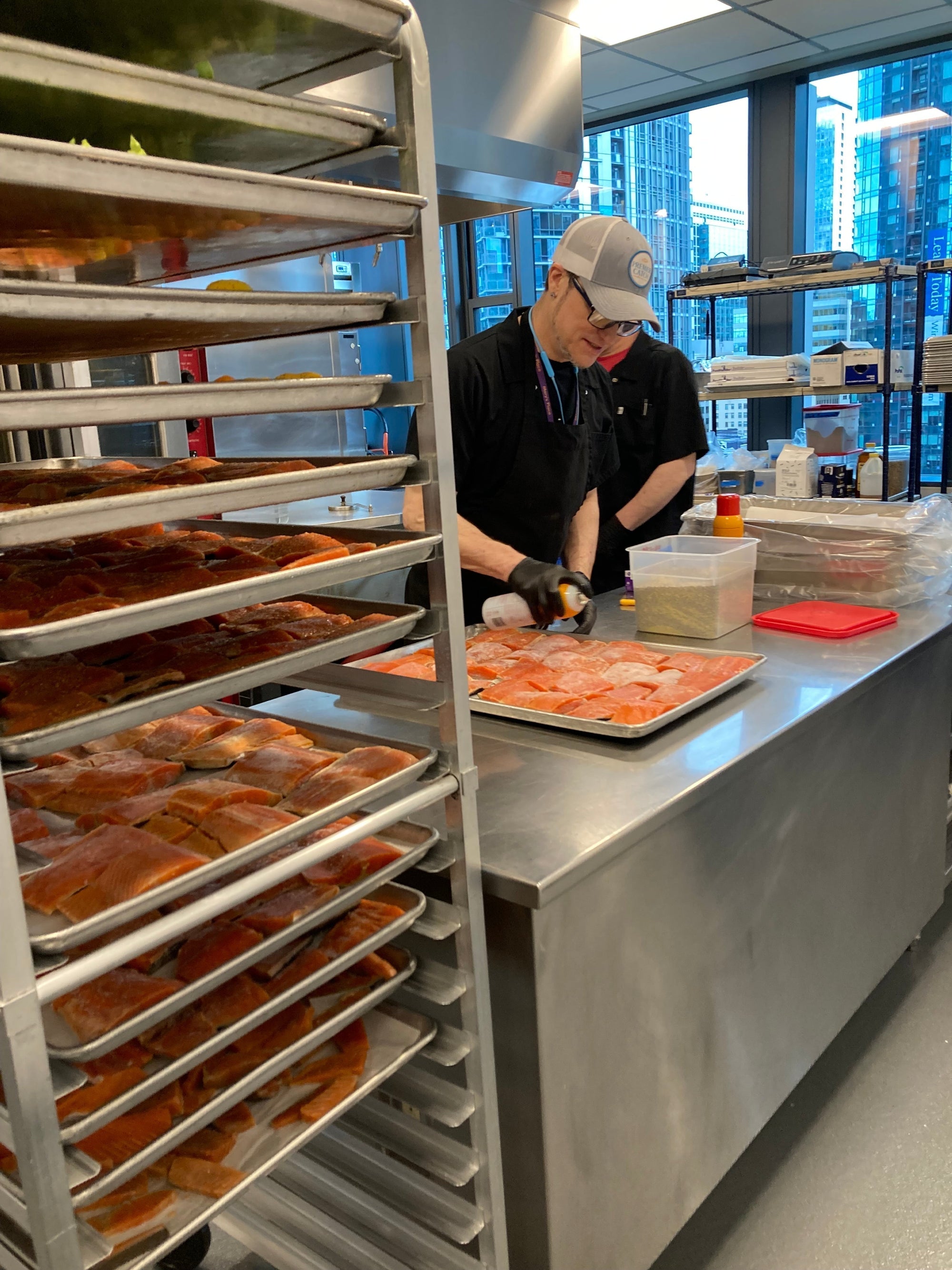Which coast has the best crab? The battle between Dungeness Crab, found along the west coast, and Blue Crab, found along the Atlantic coast, has been rampant for years. So crab-a-seat, because we’re here to share everything you need to know about both Dungeness and Blue Crab and to settle the score.
Let’s Get Cracking…
Dungeness crab and Blue Crab are both popular types of crab consumed in the United States, but they have several differences in terms of taste, habitat, size, and culinary uses.
Where are they harvested?
Dungeness crabs are primarily found on the west coast of North America, ranging from Alaska to California. They inhabit cold waters and are commonly harvested in the Pacific Ocean. Blue crabs, in contrast, are predominantly found on the Atlantic coast of North America, from the Gulf of Mexico up to the Northeastern United States. They are often found in brackish or saltwater estuaries and coastal areas.

Why does the source matter?
The crab’s source affects everything from the quality of the meat to the environmental and economic impact of the fisheries. First, the water quality and habitat directly influences the health and safety of the seafood. Crabs sourced from polluted waters can contain harmful contaminants, whereas clean waters have a much lower risk of consuming pollutants or toxins.
Additionally, sustainably caught seafood ensures that the crab populations remain healthy for future generations and supporting local fisheries and crabbers can promote positive economic impacts for fishing communities.
As a result of Alaska and the Pacific Northwest’s commitment to sustainability, Dungeness Crab is almost always raised and harvested sustainably. Blue Crab, on the other hand, is harvested heavily and their population often faces dramatic declines. This is why, at Premier Catch, we always source sustainability and are proud supporters of Dungeness.
Are they the same size?
Nope! Dungeness crabs are larger than blue crabs. Dungeness have a width of up to 10 inches or more, making them one of the largest edible crabs. In comparison, blue crabs are smaller, with shells ranging from 4 to 7 inches.

Why does size matter?
The size of the crab can influence several factors including the meat yield, taste, texture, preparation and meatier bite, whereas smaller crabs have less meat and are sweeter in flavor. Dungeness crab are larger than blue crab, making the meat richer and more flavorful.
How can I spot dungy and blue crab?
Dungeness crabs have a distinctive appearance with a wide, rounded body and reddish-brown color. They are known for their large, meaty claws and legs. Blue crabs are aptly named due to their blue coloration, especially on their claws and legs. They have a more oval-shaped body with blue and green hues.
Which crab tastes better?
Dungeness Crab and Blue Crab each have a unique taste and texture. Dungeness crab meat is known for its sweet, delicate flavor with a slightly nutty undertone. The meat is often described as tender, flaky, and succulent. Whereas, blue crab meat has a sweet flavor but a brinier taste.
Dungeness Crab is most often the crowd favorite for the depth of its flavor, tenderness of its meat, and its appearance and reputation as a delicacy.

What recipes are best for Dungeness and Blue Crab?
Dungeness crab is often preferred for its large, easily accessible meat. This is why it is commonly served whole or as crab meat in dishes like crab cakes, crab salads, and crab bisque. Since they are smaller, blue crab is typically used in smaller quantities. Blue crab is popular in various regional dishes, such as Maryland-style crab cakes and gumbo. It is also used in crab boils and as a topping for sushi rolls.

When is it available?
Blue crab harvesting season starts in spring and goes through late fall and Dungeness crab season spans from December to August, depending on the location.
Despite a shorter season, Premier Catch makes it easy to enjoy Dungeness crab year round by cleaning, cooking and freezing our crab soon after it’s caught. This ensures that it is at its highest quality and maximum purity and taste when it reaches our customers. We also specially process our Dungeness crab into “Snap-N-Eats”, which is a custom process that includes individually scoring each section of the leg, making it very easy to simply “snap and eat”. Our Dungeness crab can simply be defrosted and served cold, or they can be steamed, boiled, or baked and served warm, or incorporated into your favorite crab recipe.
We also offer the enjoyment of the sweet, succulent flavor of wild Dungeness crab without the hassle and mess in our meat only packs. Similar to our Dungeness Crab Snap-N-Eats, we clean, cook and then pick the meat out of the shell for you. We vacuum seal the meat and freeze it for the ultimate treat all year round. A 1lb pack of Dungeness Crab Meat is perfect for use in crab cakes, salads, pastas, omelets and dips.

Join us in Eating Wild!
From their habitat, size, appearance, taste, and culinary applications, the difference between Dungeness and Blue crab is stark. At Premier Catch, we are committed to delivering sustainably sourced seafood of the highest quality which is why we love Wild Alaska Dungeness Crab!
Dungeness vs. Blue Crab
| Aspect | Dungeness Crab | Blue Crab |
| Habitat | West Coast, ranging from Alaska to California | Atlantic Coast and Gulf of Mexico |
| Size | Larger, carapace up to 10 inches or more | Smaller, carapace typically 4 to 7 inches |
| Appearance | Wide, rounded body, reddish-brown | Oval-shaped body, blue and green hues |
| Taste and Texture | Sweet, delicate flavor, tender, flaky meat | Sweeter, brinier flavor, more robust, texture varies |
| Culinary Uses | Served whole, crab cakes, salads, bisque | Crab cakes, gumbo, crab boils, sushi topping |
| Availability | Year Round! | Seasonally, spring to late fall |
| Sourcing | Sustainably Sourced | Over-harvested, Unsustainable |


